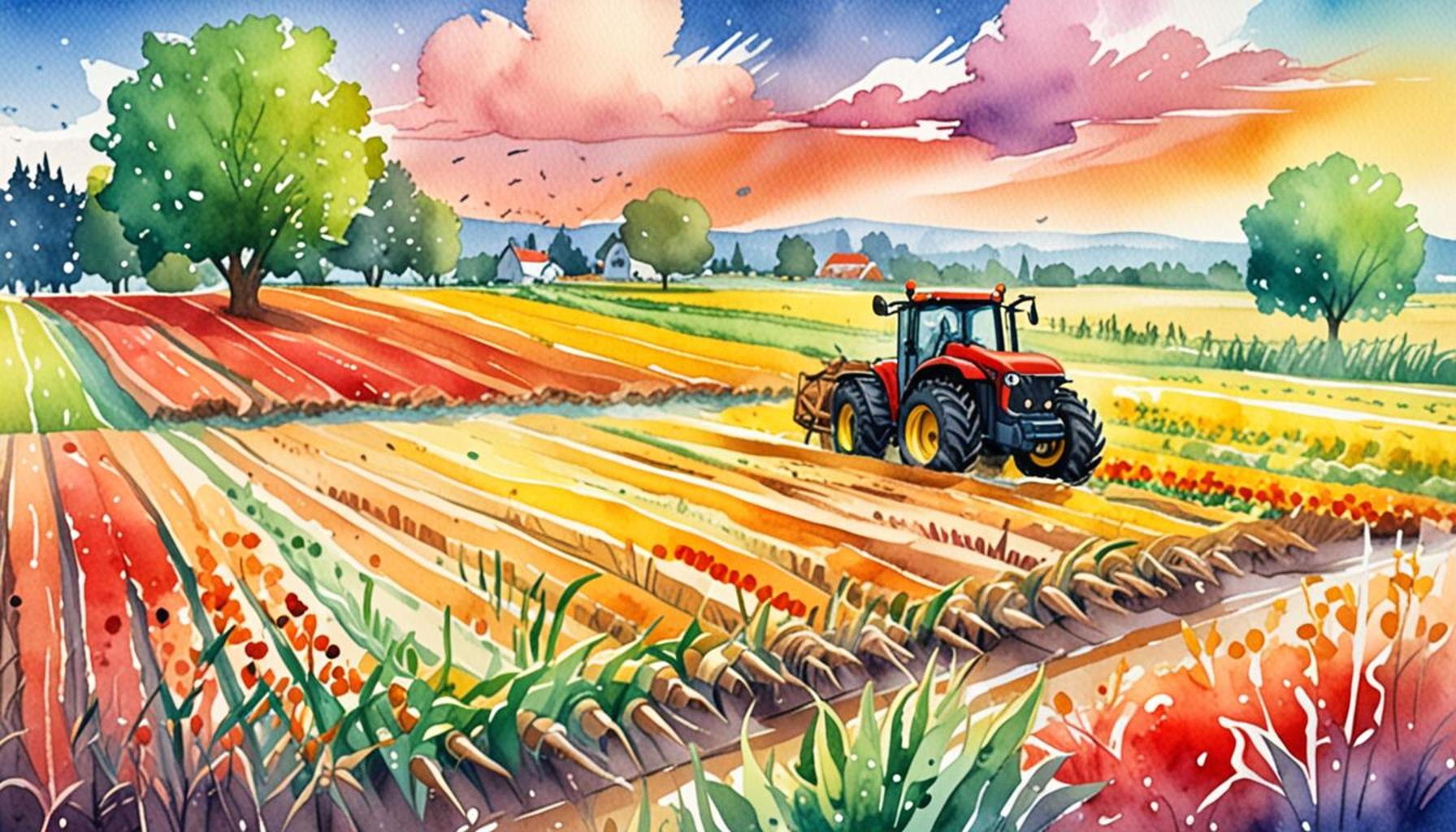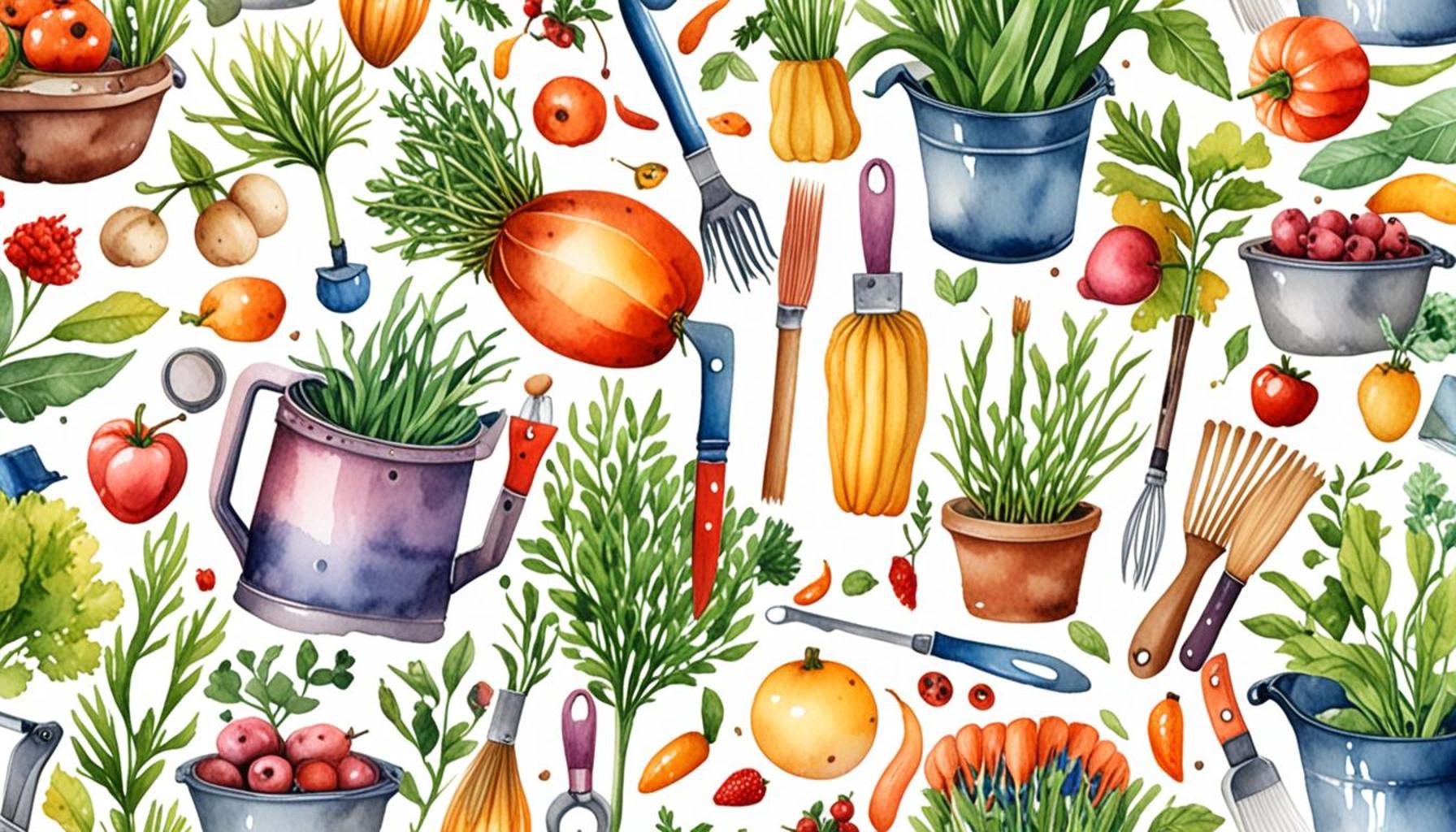The importance of harvesting at specific times: taking advantage of weather conditions

Importance of Timing in Agriculture
In the realm of agriculture, timing is paramount, particularly when determining the optimal moment for harvesting crops. The intricate dance between the farmer and nature is influenced significantly by weather patterns, which govern not only the health of crops but also their eventual quality and market value. Understanding these patterns can mean the difference between a bountiful harvest and one that fails to meet expectations.
The right timing when harvesting can dramatically enhance the flavor, freshness, and nutritional value of crops. Weather elements, such as temperature fluctuations and precipitation forecasts, play instrumental roles in making these critical decisions.
Key Factors Influencing Harvesting Decisions
Farmers must consider several critical factors when deciding the best time to harvest:
- Moisture Levels: The moisture content in produce impacts both flavor and longevity. For instance, when harvesting berries, timing is crucial; picking them too early may result in a tart taste, while harvesting too late can lead to mushiness. Striking the right balance ensures fruits have optimal sugar levels and texture, both of which are vital for consumer satisfaction.
- Temperature: Harvesting during cool hours of the day, such as early morning or late afternoon, preserves the quality of fruits and vegetables. For example, leafy greens tend to wilt quickly in high temperatures, decreasing their marketability. Additionally, extreme temperatures can compromise the nutrient content in crops, emphasizing the need to monitor local weather forecasts closely.
- Seasonal Trends: Familiarity with the seasonal weather patterns specific to one’s region aids farmers in planning their harvest effectively. For instance, the Midwest’s late-summer humidity may necessitate an earlier corn harvest to prevent mold, while the California climate allows for a longer growing season. Understanding these trends enables farmers to be proactive in their approaches, ultimately leading to a better harvest.
A Strategic Approach to Harvesting
By harvesting at optimal times, farmers not only enhance the quality of their crops but maximize their economic returns as well. Utilizing up-to-date weather forecasts provides crucial data that steer decisions on when to proceed with harvesting. As climate variability increases, advanced weather tracking tools—such as precision agriculture technologies—are becoming indispensable in modern farming. These tools help farmers identify the best harvest windows, minimizing losses and ensuring greater sustainability.
Moreover, understanding local weather conditions fosters resilience in farming practices. For instance, Southern farmers might prepare for unexpected droughts by scheduling irrigation before anticipated heat waves, thereby ensuring crops are primed for harvesting. Such forethought leads to a plethora of advantages, from improved quality to increased profit margins.
In conclusion, the relationship between weather and agriculture is a complex yet fascinating aspect that invites ongoing exploration. By delving into how specific weather conditions affect the timing of harvests, farmers can unlock valuable insights that drive their success. As the seasons change, staying informed and adaptable becomes crucial in navigating the challenges of modern agriculture, facilitating both sustainability and profitability.
DISCOVER MORE: Click here to learn about the impact of harvesting on plant health
Harvesting with Precision: The Role of Weather in Crop Quality
The intricate relationship between weather conditions and agriculture plays a crucial role in determining the success of harvesting efforts. Farmers today must be aware that optimal harvest times are not merely dictated by the crop’s growth cycle, but are significantly influenced by weather patterns leading up to and during the harvest period. These factors combine to determine the overall quality, flavor, and lifespan of the produce, which ultimately affects market prices and consumer satisfaction.
Strategic harvesting requires a keen understanding of three primary weather-related factors that can alter the outcome of the season:
- Humidity Levels: Humidity can greatly affect crop quality, with high humidity often leading to increased pressure from pests and diseases, particularly in fruits like tomatoes and strawberries. Recognizing the forecasted humidity levels enables farmers to make timely decisions regarding when to harvest, helping to avoid potential post-harvest losses and spoilage.
- Rain Forecasts: Rain can be a double-edged sword. While ample water is necessary for healthy crops, too much rainfall right before harvest can hinder operations. For instance, harvesting wet grains can result in spoilage if they are not dried properly. By closely monitoring rain forecasts, farmers can schedule harvesting during drier windows, ensuring that their yield is brought in efficiently and without damage.
- Frost Predictions: In regions susceptible to frost, like the northern United States, timing is crucial to avoid crop loss. A sudden drop in temperature can damage fruits and vegetables that are vulnerable to freezing. Farmers must keep an eye on nightly temperatures as summer progresses into fall, planning their harvests accordingly to prevent extensive losses.
Harvesting at the right moment not only improves the crop’s immediate quality but also extends its shelf life in the marketplace. When fruits and vegetables are picked at their peak ripeness, they often exhibit enhanced nutritional value and flavor, traits that discerning consumers actively seek. For example, fruits left on the vine too long may become overly ripe, leading to mushy textures and a lack of crispness, which can same produce less appealing to buyers.
Leveraging Technology for Better Timing
Today’s agriculture is increasingly interwoven with technology, providing farmers with the tools necessary to make informed decisions about harvesting in relation to weather conditions. Precision agriculture technologies, such as satellite imaging and soil moisture sensors, allow farmers to gather real-time data on both their crops and environmental factors. By integrating this data, precision farming not only aids in determining the optimal harvest window but also supports long-term sustainability efforts.
Farmers can also utilize apps and platforms that specialize in weather tracking to receive alerts and updates tailored to their specific locations. This level of preparedness provides a competitive edge, ensuring that harvests are not only well-timed but also yield the highest quality produce possible.
As the agricultural landscape continues to evolve, understanding and adapting to the importance of weather conditions will remain vital for farmers aiming to maximize both the quality of their products and their market viability. Through strategic planning and the integration of advanced technologies, the ability to navigate the complexities of nature becomes not just a necessity, but an opportunity for growth.
The Importance of Harvesting at Specific Times
Harvesting crops at the right time is crucial for maximizing yields and ensuring food quality. Weather conditions directly influence the optimal timing for harvest, making it essential for farmers to stay informed. Understanding seasonal weather patterns can greatly enhance crop output and profitability.One of the major advantages of timing your harvest according to weather patterns is the ability to prevent spoilage. Crops harvested during their peak ripeness not only taste better but also have a longer shelf life. For example, fruits like tomatoes and apples should be picked on dry days to minimize moisture which can lead to mold. Additionally, early harvesting during sunny weather can enhance sugar content in fruits, making them more appealing to consumers.Another critical factor is the risk of disease. Wet or overly humid weather can invite pests and diseases that devastate crops. Farmers who anticipate rain can plan to harvest earlier or choose resistant varieties. Moreover, timing your harvest can also influence market prices. When a crop is harvested in synchronization with favorable weather conditions, the reduced risk of loss can lead to higher market demand and better prices.In summary, strategic planning around weather conditions not only safeguards crop quality but can also yield financial benefits. The implications of harvesting at the right time are significant, and further exploration into the science and best practices can boost agricultural productivity remarkably.
| Category | Advantages |
|---|---|
| Optimal Quality | Crops harvested at the right time have enhanced flavor and market appeal. |
| Reduced Risk | Timing harvests to avoid adverse weather minimizes spoilage and disease. |
DISCOVER MORE: Click here for expert tips
Understanding Seasonal Variability: When Nature Dictates Harvest Timing
The agricultural calendar is heavily influenced by seasonal variability, meaning that not only does the weather affect when to harvest, but it also shapes the entire growing season. As climate change continues to shift traditional weather patterns, farmers find themselves needing to adapt their harvesting schedules accordingly. Unconventional weather events, such as unusually early frosts or extended droughts, can lead to significant shifts in crop readiness, demanding a flexible approach to harvesting.
Understanding these seasonal changes can provide farmers with a competitive advantage. For instance, research shows that crops such as corn will yield better when harvested during the appropriate fall temperatures, as higher daytime temperatures can lead to kernel damage. In warmer regions, some growers have found success by adjusting their planting schedules to ensure that they can take advantage of cooler harvest conditions, thereby protecting their yields and maintaining quality.
The Impact of Microclimates on Harvest Timing
Another intriguing aspect of harvesting is the phenomenon of microclimates, localized weather conditions that can be different from the surrounding area. Recognizing microclimates is essential for farmers, as these unique environments can dictate specific harvesting times. For example, vineyards in California often have different microclimates within the same region due to variations in elevation, proximity to bodies of water, and soil types. These microclimates can lead to distinct ripening periods for grapes, requiring vineyard managers to conduct precise timing based on localized conditions.
This localized knowledge is not just limited to vineyards. Berry growers also take advantage of microclimates to determine the perfect time to harvest strawberries or blueberries. By monitoring temperature differentials and humidity levels in different sections of their fields, they can avoid losses and ensure that berries are picked when they are firm and sweet—qualities that significantly enhance their market appeal.
Utilizing Historical Weather Data for Predictive Harvest Planning
Farmers are increasingly turning to historical weather data to inform their harvesting strategies. By analyzing past weather patterns, they can predict probable outcomes for the current growing season. This foresight allows them to plan for specific weather challenges, such as anticipating periods of wet weather that may hamper late-season harvests. Using data analytics and forecasting tools, farmers can create a proactive approach rather than a reactive one.
For instance, an analysis of past frost dates can help farmers determine the optimal time to pluck crops such as apples and pumpkins. States like Michigan and New York, known for their apple orchards, have utilized historical data to create predicted frost-free days. Such insights enable them to harvest at times when fruit maximizes flavor and texture, ensuring the produce meets both quality standards and consumer expectations.
While the weather can be unpredictable, understanding and leveraging these dynamics allows farmers to not only protect their investment but also enhance their reputation in the marketplace. By educating themselves on the significance of weather patterns and seasonal variations, producers can optimize the harvesting process, ensuring a steady supply of high-quality produce for consumers throughout the year.
LEARN MORE: Click here for essential tips on fruit storage and preservation
Final Thoughts on Harvest Timing and Weather Optimization
The delicate interplay between agriculture and weather conditions underscores the immense importance of timing in harvesting. As we have explored, understanding seasonal variability is not merely a matter of tradition but a crucial strategy for modern farming that has been reshaped by climate change. Adapting harvesting timelines to account for microclimates can dramatically enhance crop quality and yield, confirming that local weather nuances can dictate success.
Furthermore, leveraging historical weather data allows farmers to foresee potential challenges and make informed decisions. By accurately timing the harvest, farmers not only protect their investments but also improve the marketability of their produce. For instance, optimizing harvest periods for specific crops, such as apples or grapes, ensures they reach consumers at peak flavor and quality, which can lead to stronger sales and better reputation.
As the agricultural landscape continues to evolve, it is imperative for farmers to embrace adaptive strategies that consider weather variability in their harvesting plans. Investing in technology, analyzing past weather patterns, and fostering a deep understanding of local microclimates are steps that will pave the way for a more resilient and productive future in farming. Ultimately, those who harness the power of weather in their harvesting strategies will not only enhance their operational success but also contribute to food security and sustainability for generations to come.


